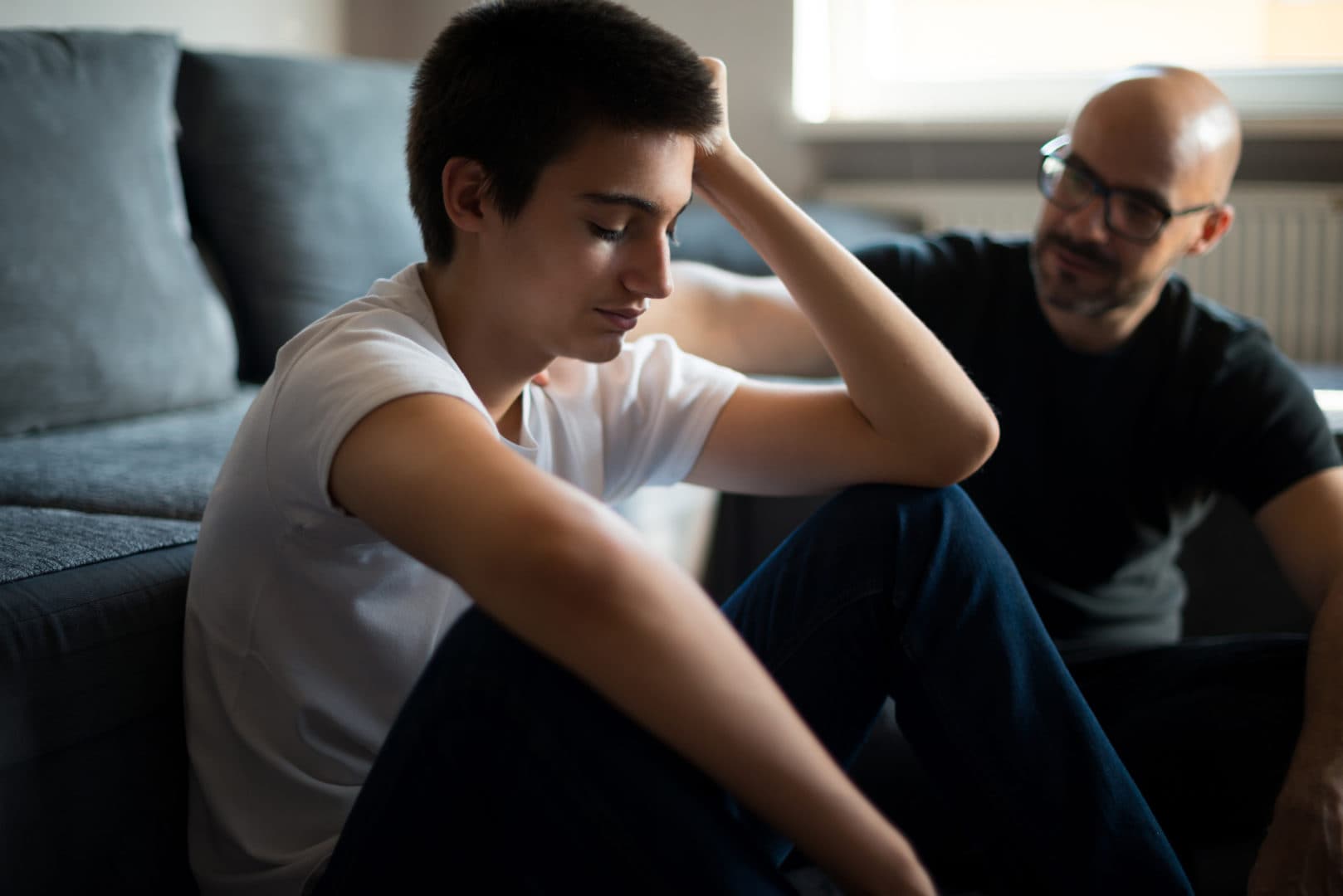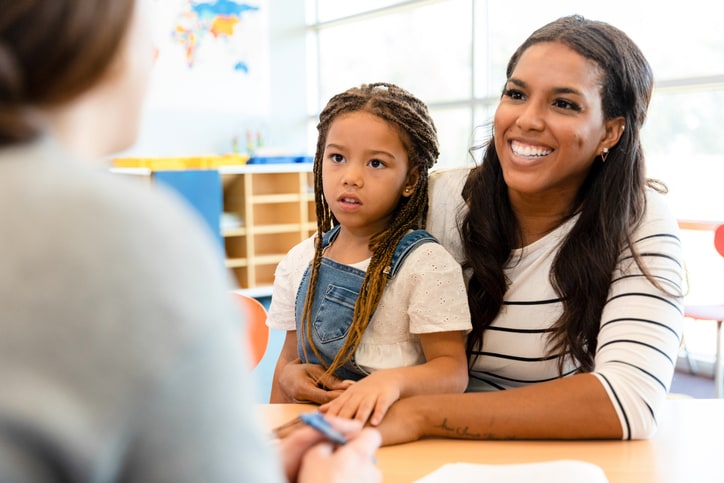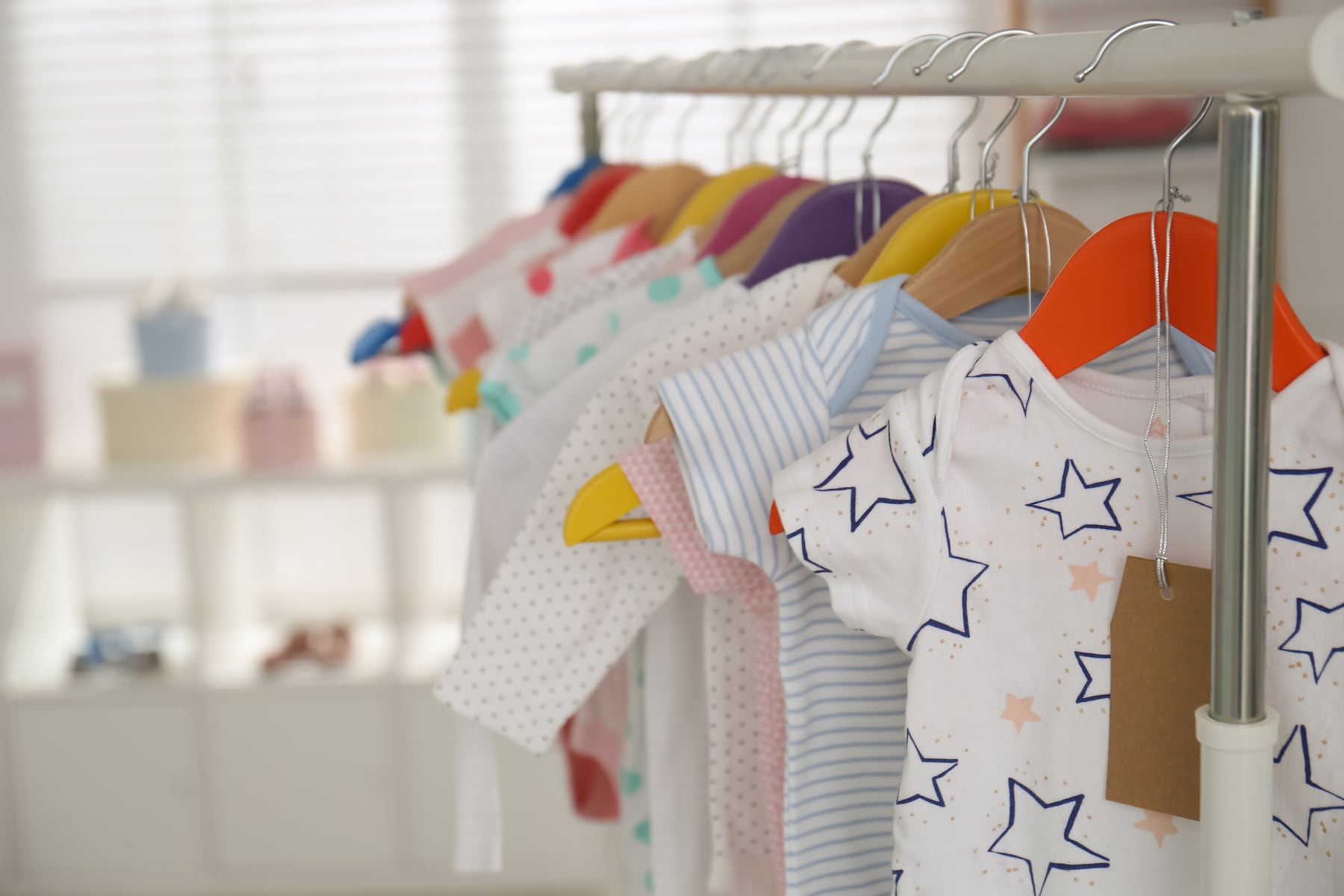Society has come a long way, with more LGBTQ+ resources and support systems available than ever. But it’s still painfully common to hear of parents who don’t support their LGBTQ+ child and even sever relationships after their coming out. As a parent, you don’t need to formulate the “perfect” response. You simply need to respond to your child’s announcement with unconditional love and a willingness to learn, which will benefit everyone.
As your family navigates this emotional journey, consider these tried-and-true tips from experts and parents on how to support your child through the coming out process.
Lead with love
When your child comes out, you may feel a rush of emotions and have questions or concerns. It might feel sudden to you, but it’s possible your kid has been sitting on this for a while, stressing about when and how to tell you. Regardless of your personal feelings, how you react will make a lasting impression on them, so it’s ideal to provide love and acceptance from the start.
Aruna Rao is a New Jersey-based mom of a transgender child and a member of the PFLAG National Board of Directors. “Remember that your child coming out to you is an act of deep trust, so it’s really important to let them know you love them just as they are,” she says.
Shawn Hendricks, a gay woman who is now 42 and living near Chicago with her wife, encourages parents to show their LGBTQ+ kids unconditional love and support, as she still feels lingering pain from her mom’s first reaction to her coming out in her late teens. Her mom said she would always love her but didn’t agree with her lifestyle choice. Hendricks thinks her mom meant well, but her reaction hurt. “It stung because it felt like she was saying, ‘I don’t agree with you or understand you as a person,’” she explains.
“Remember that your child coming out to you is an act of deep trust, so it’s really important to let them know you love them just as they are.”
—Aruna Rao, mom and activist
Find an affirming counselor
Therapy is often enormously beneficial for a youth who is coming out and may feel alone, lacking guidance and support, says Nadia Speziale, a licensed professional counselor with Bright Horizons Counseling Services, LLC, in Stafford, Virginia, who often works with LGBTQ+ youth.
“Too often we see young kids scared or unsure about their parents’ and loved ones’ responses that they hold onto it so long, and this can result in other underlying mental health issues, such as anxiety, depression and suicidal thoughts,” Speziale says. Counseling with an LGBTQ+-affirming therapist — one who is either in the community or works in it often — provides a safe space where youth can feel empowered and supported while learning how to communicate.
“Too often we see young kids scared or unsure about their parents’ and loved ones’ responses that they hold onto it so long, and this can result in other underlying mental health issues, such as anxiety, depression and suicidal thoughts.”
—Nadia Speziale, licensed professional counselor
Speziale says it’s also helpful for the parents to be part of some sessions since it’s a process for the entire family. Some parents also benefit from finding their own individual counselor to navigate and process emotions in a safe space, Spezialie says. When Rao’s son came out as trans, both he and Rao participated in individual therapy, but they also did sessions as a family with a supportive therapist. “It was very helpful being able to speak to each other in a safe environment,” she recalls.
Bring them to a peer-support group
Peer support groups can now be found all over the country, both for LGBTQ+ youth and their parents. The youth groups offer a welcoming place to meet like-minded peers and share feelings and experiences.
One such group, the nonprofit Out Youth in Austin, Texas, focuses on peer support groups and events for LGBTQIA youth. Briona Jenkins, a queer activist with a social work background, just spent several years working for Out Youth and says she saw firsthand how beneficial peer support is for kids. In addition to youth peers, Out Youth also has adult volunteers present, many who are in the LGBTQ+ community themselves. They help create a safe and empathetic environment, open space for conversation and serve as role models, Jenkins says.
Elizabeth Lopez Castro is a teacher and mom of two boys, and they live in Okinawa, Japan, for her husband’s Marine Corps assignment. When her older son, Enrique, came out as gay around age 13, the family was stationed in San Antonio. Enrique had already researched and asked to attend Fiesta Youth, a nonprofit similar to Out Youth with peer support groups.
Before he went, Castro sensed her son felt different from his classmates and not fully accepted. “Being in that group made him feel like he belonged there and showed him he wasn’t alone,” she says. Keep in mind that if your area doesn’t have a youth support group, some middle schools and high schools have clubs for LGBTQ+ students and their allies.
Seek out resources
Today’s youth are fortunate to have an abundance of resources at their fingertips, as LGBTQ+ people in previous generations had very few resources, and visibility in media was paltry. Just talk to an LGBTQ+ adult, and most will say they grew up feeling alone or weird, especially before the internet was around to show them this wasn’t the case.
Hendricks grew up in a rural Illinois town with a population under 2,500, where she had zero exposure to LGBTQIA people in media, in school or in conversations at home. While she’s now living out and proud, she thinks about how much easier her life would have been if she’d had exposure to LGBTQ+ people and received the support she needed at a young age.
As you seek out the best resources for your child, Jenkins suggests thinking about how you and your child best digest information, whether it’s by listening, watching or reading. Regardless of your preference, there are now countless books, podcasts, blogs, Instagram accounts, YouTube videos, documentaries and other LGBTQ+ resources for free online, she says. Depending on your child’s age and personality, you can do this together or separately. If your child likes to read, The Trevor Project has a coming-out handbook for youth, and the Human Rights Campaign has an online resource hub for LGBTQ+ youth.
In addition to helping your child learn more about their identity, Jenkins recommends that parents help their children explore the LGBTQ+ community’s history, which can cultivate a sense of connection and pride. For example, she says, learn together about the Stonewall Riots, AIDS epidemic, famous figures like Harvey Milk and Marsha P. Johnson, and the other movements and people who shaped the community.
Respect your child’s wishes
It’s common for kids and teens coming out to fear rejection from their loved ones. While some may want to come out to everyone at once, others prefer a slower approach. It’s helpful to let your child lead the way.
Castro’s son came out to his father first, but he wasn’t ready to tell his mom yet. She says she used to make comments many mothers do, like how much she looked forward to one day having a house full of grandchildren. She had no intention of hurting her son, but she believes he internalized it and was afraid coming out would break her heart. While her husband did fill her in privately, she didn’t say anything until Enrique was ready to bring it up himself. Eventually, Enrique came out to his mom, and she did the best thing a parent could do: She welcomed him with open arms and told him she loved him unconditionally, always, no matter what.
Despite the positive reception at home, Enrique was nervous to tell the rest of the family, especially given their traditional Mexican heritage. It took a year for him to be ready, and looking back, Castro knows it was wise to work with the timeline he was comfortable with.
Keep the lines of communication open
It’s helpful to make sure your child knows you’re open to talking and having difficult conversations. You are going to have questions, and your child is going to have questions. Whether you find those answers together or decide to reach out for outside support, maintaining a safe, open environment for these types of discussions is critical.
You may also be caught off guard in situations where open communication is important. For example, Castro and her husband found themselves in uncharted territory when their son asked for a male friend to spend the night. In order to ease their minds before agreeing, the couple asked Enrique some questions. Castro asked him if the friend was gay (he wasn’t) and if he knew Enrique was gay (he did). “I decided, OK, if he’s comfortable with it, I’m comfortable with it, but we had to have those lines of communication open and have those difficult conversations,” says Castro.
Keep an open mind and be willing to learn
Here’s a hard truth: You will make mistakes, but that’s OK, Jenkins says. “We are allowed to show up and mess up and grow up and do better, and it’s OK to wish you’d done things different or known sooner or been more supportive,” she says. After her coming-out, Jenkins and her father didn’t speak for years, but they eventually reconciled. “It’s never too late to apologize,” she says. “Show up, be willing to be uncomfortable, don’t be afraid to say sorry.”
When Castro’s son came out, she and her husband knew very little about the LGBTQ+ world, but they wanted to learn so they could support him. They found that being open-minded and asking questions helped, even if they stumbled and said the wrong thing. “Sometimes I had to say to my son, ‘I’m sorry, you just have to be patient with me; I’m new, but please teach me,’” notes Castro. She says she knows she and her husband aren’t perfect, but they make sure their son knows they love him unconditionally and that their lines of communication are always open. For an LGBTQ+ youth, there’s really nothing better than that.





